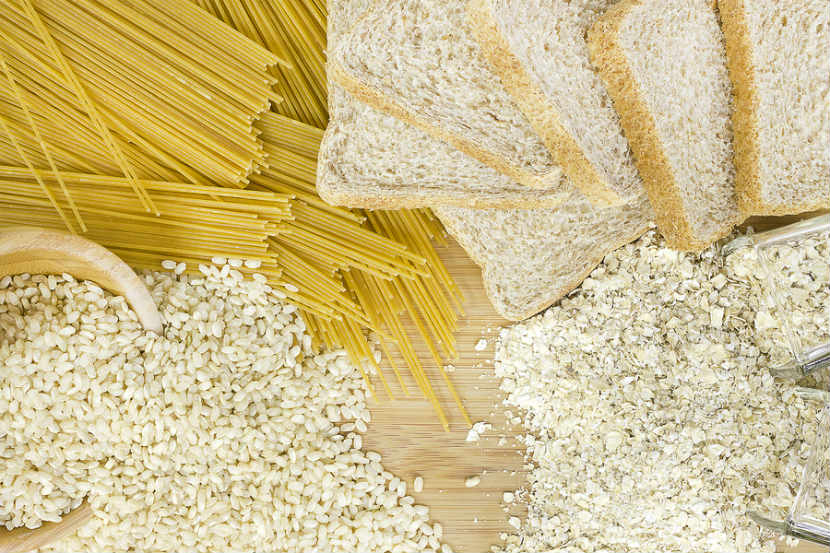
You’ve probably heard that the glycemic index can help you make healthy food choices. For people with diabetes or at risk of developing diabetes, using the glycemic index to choose foods is one way to help manage your blood sugar. Read on for more information about this scale
What is the Glycemic Index (GI)?
The glycemic index (GI) is a scale from 1-100 that ranks carbohydrate-rich foods by how much they raise blood glucose levels. Some carbohydrate foods are digested quickly, and others more slowly. The ranking is based on how the carbohydrate food when digested compares to the standard food, which is either white bread or pure glucose.
White bread and glucose have been given the highest possible rating of 100 on the glycemic index because they raise blood glucose levels higher and quicker than most other foods.
Health benefits of lower GI foods
People at risk of developing diabetes or with diabetes may find that choosing lower GI foods may be helpful. Here are some benefits of eating foods that are lower on the GI scale:
- They raise blood glucose slowly, which can improve your blood glucose levels after a meal.
- They are often higher in fibre. High fibre foods help you feel full and are important for the health of your digestive system and reducing the risk of certain diseases like bowel cancer.
- They may improve blood cholesterol levels, which is important for preventing heart disease.
Research has shown that eating mostly high GI foods increases the risk of type 2 diabetes. To help prevent diabetes, try to make a point of choosing lower GI foods more often. See the chart below to get started.
What is the GI of your favourite foods?
The GI ranks foods that are mostly made of carbohydrate. This includes grain products, fruit, milk, yogurt, starchy vegetables and legumes. Foods such as meat, fish, poultry, cheese, nuts, seeds and most vegetables have very little carbohydrate and are not ranked on the GI scale.
Here are some examples of the GI ratings of some common foods:
|
Low GI (55 or less)
|
Medium GI (56-70)
|
High GI (more than 70)
|
|
sweet potatoes, yams
|
new potatoes
|
baked potatoes, French fries
|
|
converted (parboiled) rice
|
brown rice, basmati rice
|
white rice, instant rice
|
|
breads made from heavy mixed grains, pumpernickel or stone-ground flours
|
rye bread, whole wheat bread, pita bread
|
white bread, bagels
|
|
all bran type cereal
|
shredded wheat type cereal
|
bran flake type cereal
|
|
steel cut oats
|
quick oats
|
instant oats, cream of wheat
|
|
pasta
|
couscous
|
|
popcorn, rye crisp crackers
|
pretzels, soda crackers
|
|
milk, yogurt
|
ice cream
|
|
chickpeas, lentils, split peas
|
black bean soup, green pea soup
|
|
apple
|
cantaloupe, raisins
|
dried dates
|
Looking for something else? Click on the GI database at this website to find your favourite food.
Helpful hints for getting started with the glycemic index
The GI ranking of a food will be affected by the cooking technique, how much fat or acid is in the food and how much the food has been processed (that is why instant oats have a higher GI than steel-cut oats).
- Balance your meals by adding protein and some healthy fats to your carbohydrate. This will add nutrition and will lower the total GI of your meal.
- Try eating meat alternatives more often such as legumes (lentils, chickpeas, kidney beans and navy beans). Legumes are a low GI, high fibre and low fat choice. Try this mango and black bean salad as a side dish to your next meal.
- Pastas are generally low or medium GI, unless they are overcooked. Eat pastas cooked “al dente”. For extra nutrition, try whole grain or whole wheat types.
- If you have diabetes, check your blood glucose levels 2 hours after eating a low GI food. Compare that reading with your blood glucose levels after eating a similar high GI food (for example, sweet potato compared to a baked potato). Is there a difference?
- Challenge yourself to include one low or medium GI food at every meal or snack.
How can a dietitian help?
A
dietitian is an important member of your diabetes care team. They can help you choose low GI foods that will be easy to add to your diet and will help meet your goals, whether you want to prevent diabetes or help reduce your blood glucose levels. Dietitians give your personalized advice that considers your culture, lifestyle, medical history and personal goals. Connect with a dietitian today using our
Find a Dietitian tool.
The bottom line
Remember, the glycemic index is just one tool that you can use to help manage your blood glucose levels. A healthy diabetes management plan will also include regular physical activity and frequent blood glucose monitoring.
You may also be interested in:
The Glycemic Index, Canadian Diabetes Association
What you need to know to prevent Type 2 diabetes
Diabetes menu plan for prevention and management
This article was written and reviewed by dietitians from Dietitians of Canada.
Last Update – November 18, 2021